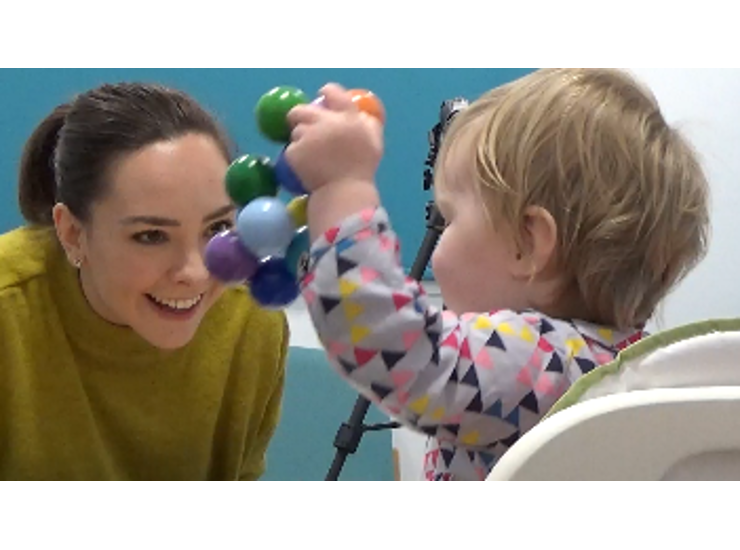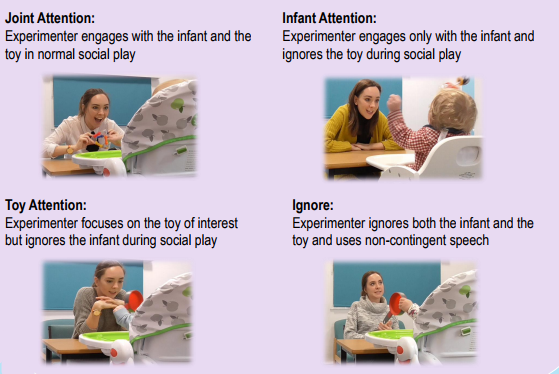
Before they begin to talk, infants use gestures, such as pointing and holding out objects, to display their wants and interests to others. However, it is often difficult to determine exactly why infants choose to gesture. If an infant holds up a teddy to their mum, they may be doing it to intentionally communicate and share their interest, or they may just be repeating a previously learned behaviour without considering what it means.
We designed an experiment to investigate the motives behind using this early gesture. This involved responding to infant hold outs in different ways, to see whether infants had an expectation, and therefore an understanding, of how their gesture should be perceived. The different response conditions are illustrated in the image below, but essentially consisted of i) a joint attention condition; ii) an infant attention condition; iii) a toy attention condition and iv) an ignore condition.

Overall, we found that infants enjoyed interacting the most when the experimenter shared their interest and attention, rather than simply chatting to the infant or describing the object. Therefore by 10 months, infants can use gestures to communicate their interests to others and have some understanding about social interaction and reciprocation. These findings have helped us to pinpoint when infants begin to develop a more complex understanding of the world around them, and highlights the importance of talking about and engaging in an infant’s focus of attention before language develops!

